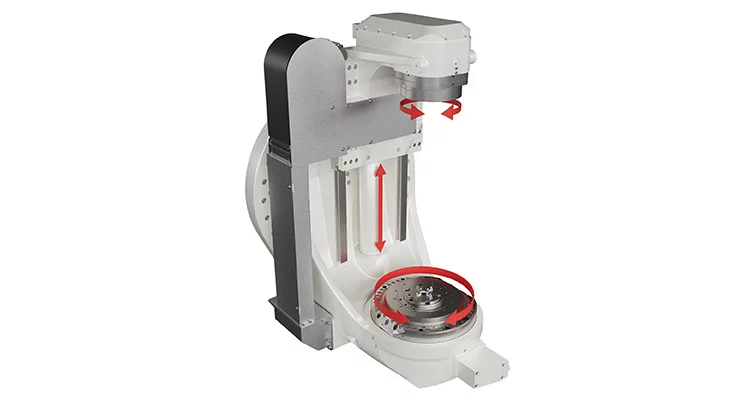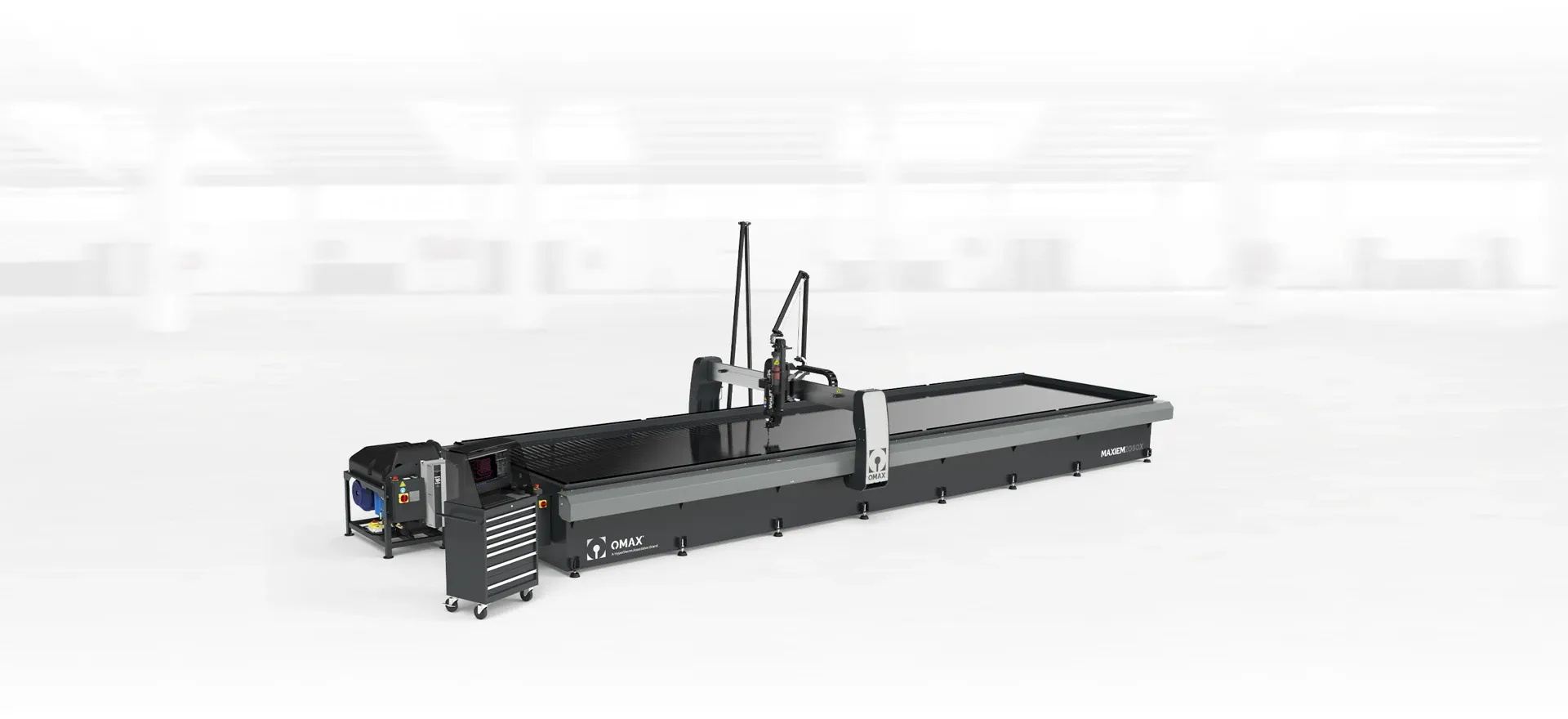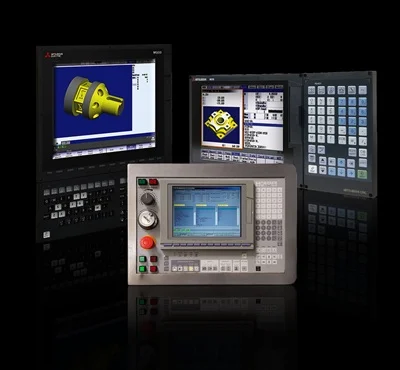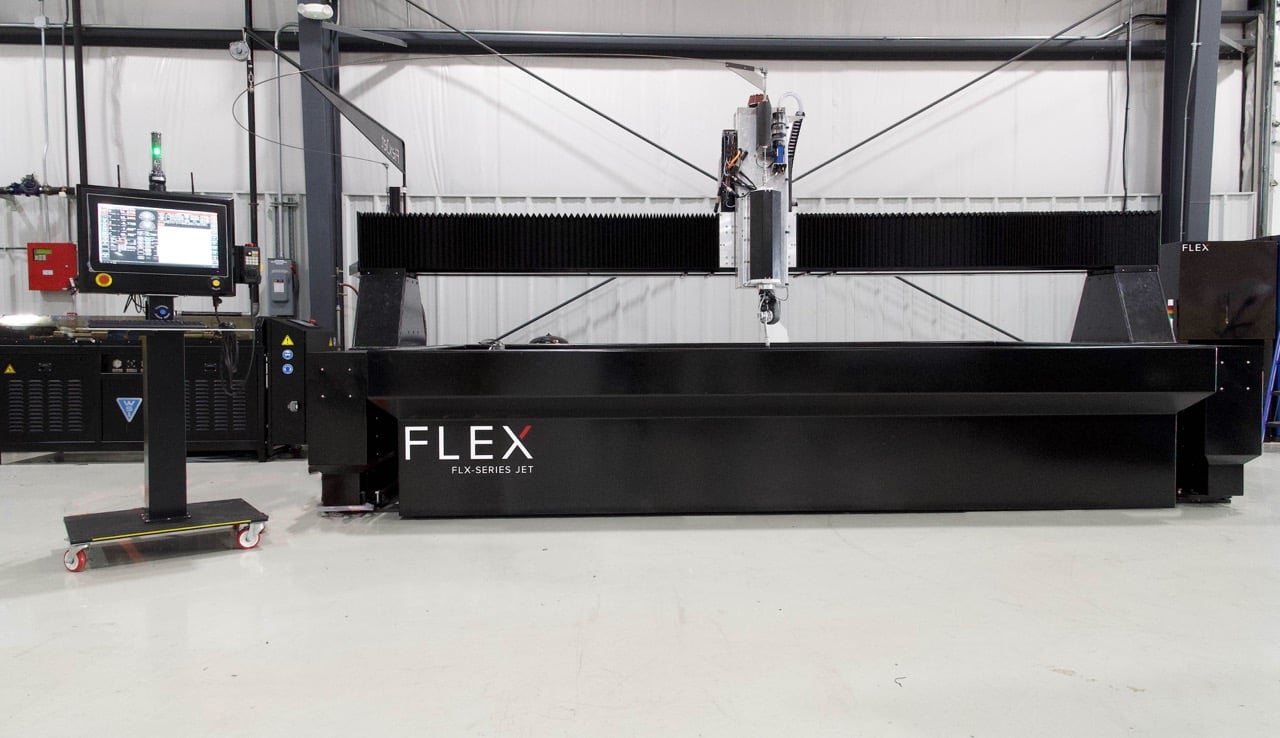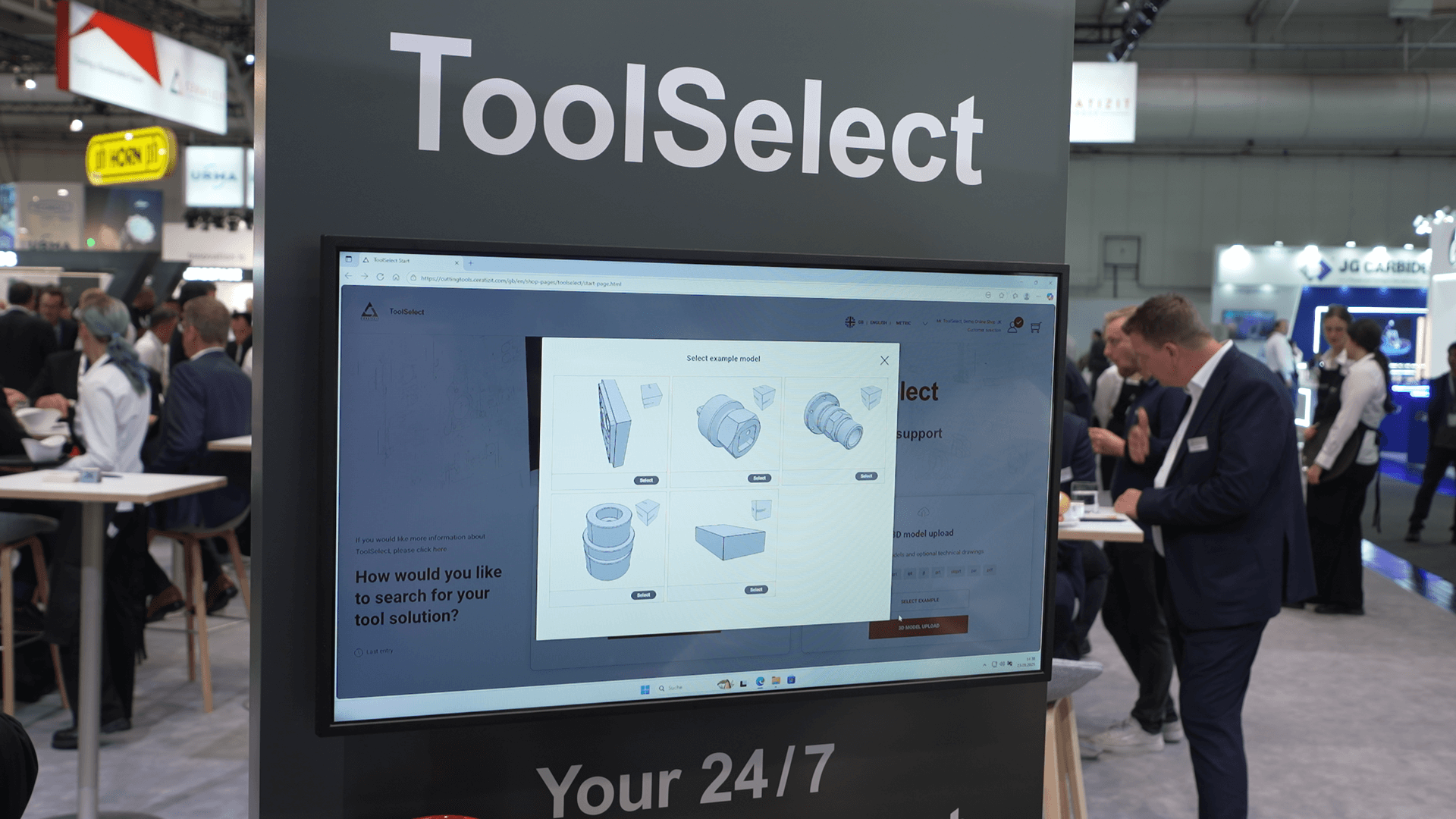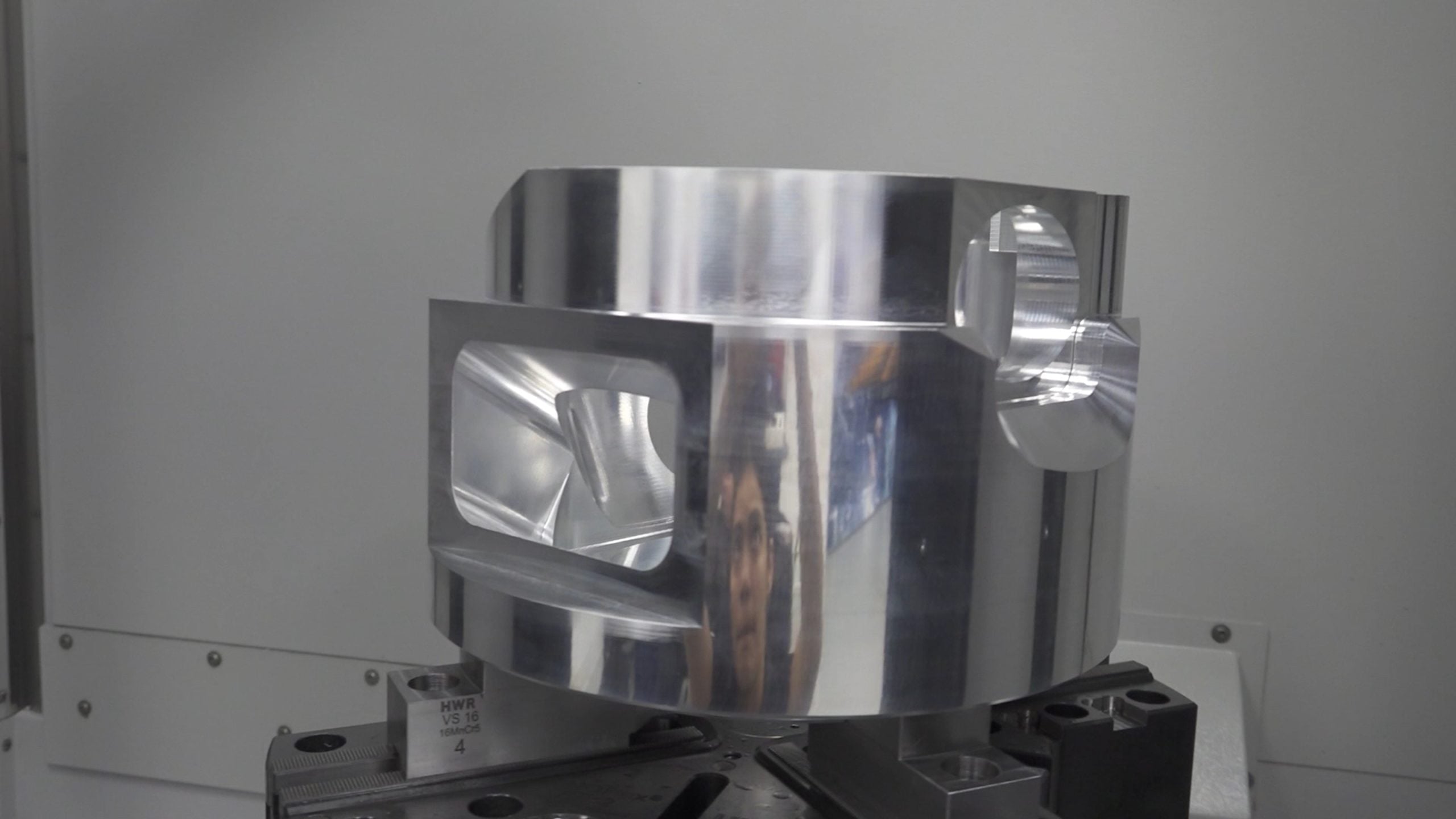
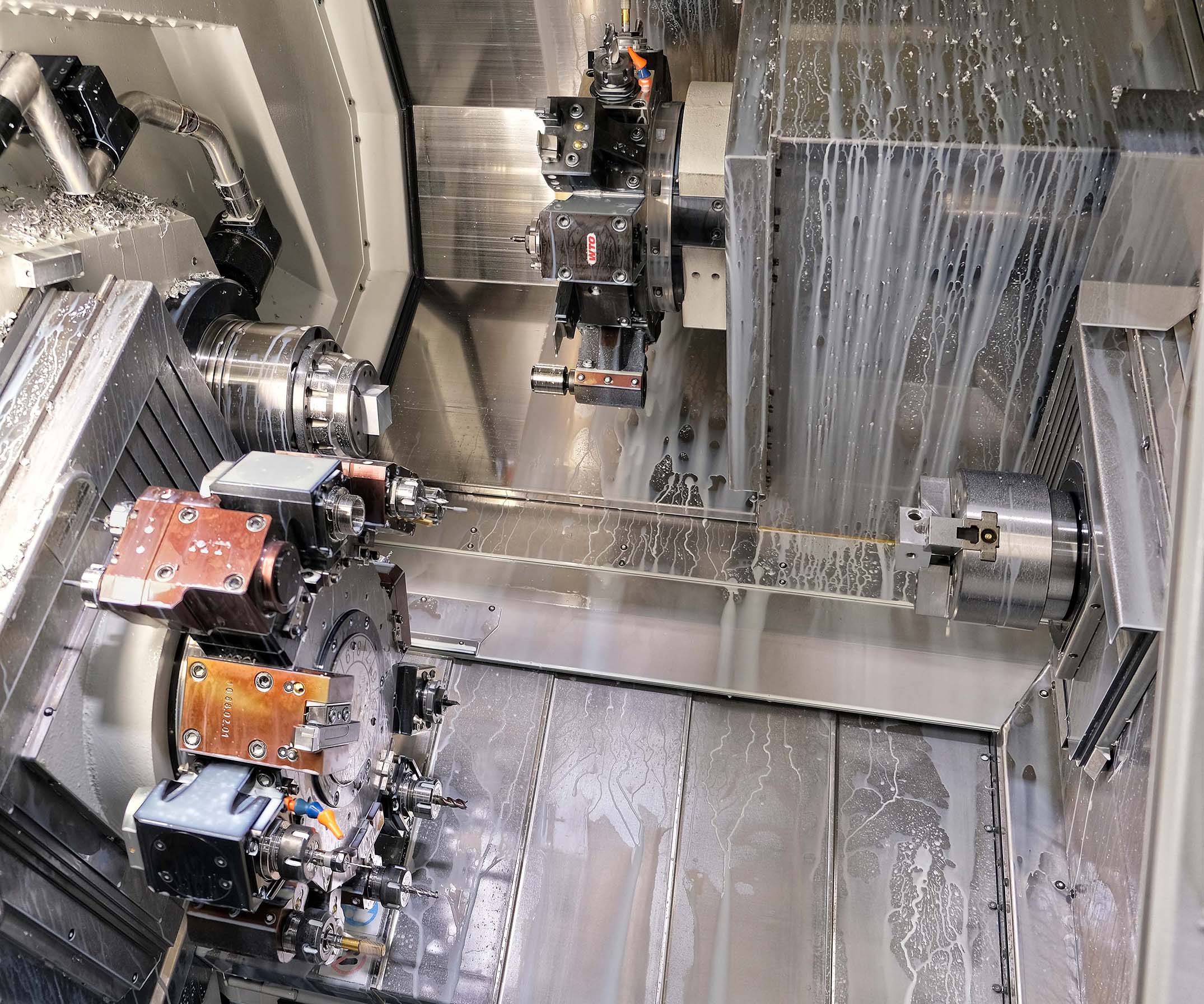
Mintdale Engineering specialises in CNC turning as well as CNC milling on five VMCs. It operates twice as many machines for rotational part production as for prismatic, although the borderline between the two is increasingly blurred.
Take an aluminium gas regulator base produced on the company’s latest Italian-built Biglia B465 T2 Y2 twin-spindle, twin Y-axis turret model supplied by Whitehouse Machine Tools. The 1.25 inch high cuboid part is machined from 2 inch square bar fed by an LNS Quick Load Servo 80 S2 short bar magazine. The component that Mintdale has been producing for 22 years, was latterly machined 20 at a time on a twin-pallet VMC. Operation one involved machining three sides, milling a circular pocket, drilling various holes and tapping them, while operation two after pallet change completed similar features. Floor-to-floor time per base was two minutes.
On the Biglia, the part is produced in one hit and requires only a small amount of face turning and parting off, the remainder of the cycle is prismatic machining. Both live turrets are deployed at the main spindle, followed by simultaneous machining at both spindles using the two tool carriers. Although cycle time is three minutes, 50% longer per part than before, the big advantage is that production is unattended, unlike on the VMC. The finish-machined components pass through the counter spindle onto a conveyor feeding a Hydrafeed Rota-Rack.


The lathe produces through the day shift, after which 100 parts can be added by running the machine lights-out until the bar is used up. The only special items needed to realise this application were a spindle liner and a bar feed attachment for the square stock.
Another component produced more efficiently from 3 inch diameter round brass bar, is a conversion body for legacy gas delivery systems used in hospitals. The so-called Mark III component formerly required four operations that included milling on a VMC and turning, followed by two further separate visits to different VMCs for more prismatic operations and engraving.
The handling and clamping in bespoke fixtures meant that floor-to-floor time was long. There was a lot of work-in-progress, which extended delivery lead-times.
This is in the past now that the part is completed on the Biglia in a five-minute cycle. That is quicker than just one of the previous VMC operations. Now, no special workholding is needed. A third part transferred to the lathe is a Mark IV version of the gas delivery conversion body, turn-milled from brass bar. It used to be produced in two operations on a chucking lathe on which a special jig was made for holding the irregularly shaped Op1-machined billet to enable Op 2.
A high metal removal rate is now achieved by balanced milling at the main spindle for some of the time using cutters in both the upper and lower turrets simultaneously. The profile of the part is also milled and a bore is drilled before parting off and synchronous transfer to the sub-spindle. Here, the back face is milled, various holes are drilled and the bore is finished.
The specification of the Biglia B465 T2 Y2 includes 80mm diameter bar capacity, up to 200mm turning diameter to a length of 350mm, a 26 kW/4,000rpm main C-axis spindle, 11 kW/5,000rpm for the C-axis sub spindle, and 12 live stations in each turret rated at 3.7 kW/4,000rpm with a 90 mm Y-axis stroke.



